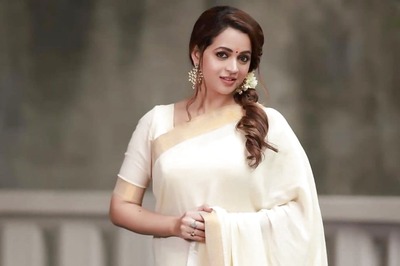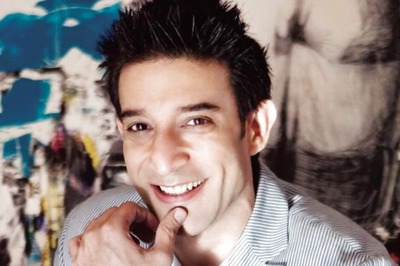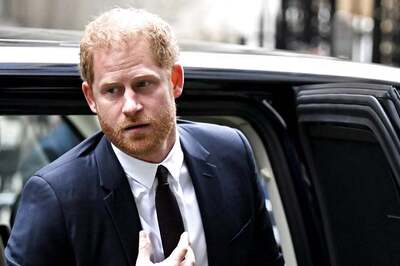
views
“Women are responsible for two thirds of the work done worldwide, yet earn only 10 per cent of the total income and own 1 per cent of the property… So, are we equals? Until the answer is yes, we must never stop asking,” English Actor Daniel Craig once said, elaborating on gender discrimination. Women have been trying hard to bridge the gender pay gap and have been fighting a long battle for the same. After all these years, someone has finally heard as the Board of Control for Cricket in India (BCCI) has taken a path-breaking decision, offering an equal pay scale to the Indian men and women contracted cricketers. Secretary Jay Shah made the announcement on Thursday. He stated that the match fee for both men and women players will be the same. He further claimed that the main aim is to ‘tackle discrimination.’ This comes as a revolutionary step toward promoting pay parity in a patriarchal society.
He took to Twitter to announce the development. “I’m pleased to announce BCCI’s first step towards tackling discrimination. We are implementing a pay equity policy for our contracted women cricketers. The match fee for both Men and Women Cricketers will be the same as we move into a new era of gender equality in Indian Cricket,” Shah tweeted. This means Harmanpreet Kaur and Co. will earn a match fees of ₹15 lakh per Test, ₹6 lakh per ODI and ₹3 lakh per T20I, the same as their male counterparts.
I’m pleased to announce @BCCI’s first step towards tackling discrimination. We are implementing pay equity policy for our contracted @BCCIWomen cricketers. The match fee for both Men and Women Cricketers will be same as we move into a new era of gender equality in ???????? Cricket. pic.twitter.com/xJLn1hCAtl— Jay Shah (@JayShah) October 27, 2022
BCCI, however, is not the first board to make such a decision. New Zealand Cricket (NZC), earlier in July, was the first one to set a benchmark in the cricketing fraternity by announcing an equal pay scale for both of its players.
and applause for BCCI secretary Jay Shah as BCCI’s first step towards tackling discrimination between women and men players has finally met its due diligence! #Bcci #BcciWomen #EqualPay #Cricket #Equality #GenderEquality #PayRight #NoMoreDiscrimination #WhatAMove #JayShah— Swetta Jumaani Numerologist (@swetta_jumaani) October 27, 2022
Finally Indian women cricketers will be paid the same match fee as their male counterparts. In all format Test, ODI & T20ICongratulations???? @Indianwomenteam @ImHarmanpreet#BCCI #BCCIPresident #BCCIWomen pic.twitter.com/jg4tdWV3vo
— AkHiLeSh KuMaR (@akkik020) October 27, 2022
A red letter day for Women’s Cricket in India.The match fee for both Men and Women Cricketers will be same from now, as BCCI introduces Pay equity.
????: BCCI#equalpayforwomen #cricketnews #TeamIndia #womenempowerment #WomensCricket #BCCI #BCCIWomen #t20worldcup pic.twitter.com/EbSgyy8Sjq
— Cricopia.com (@cric_opia) October 27, 2022
Paying women less than men is just unacceptable, especially in the modern world. Bridging the pay gap would further contribute towards creating a fairer society where everyone is given equal opportunities. Also, this not just sends a positive message about the organisation’s values but also proves beneficial for business.
Not to mention how better pay can always be a good motivational factor as well, hence, amplifying productivity and efficiency and attracting the best employees.
Initiatives taken: International Equal Pay Day
Several initiatives have been taken to make people aware of the pay discrimination all across the globe. In one of these attempts, International Equal Pay Day is observed annually to highlight this issue. It is a United Nations-recognised event that falls on September 18. It was first observed back in 1996 by the National Committee on Pay Equity. It was an effort by the coalition of women’s and civil rights organisations as they worked towards eliminating gender and race-based wage discrimination.
The main goal was to achieve pay equity. It was not until 2019 that the Equal Pay International Coalition began officially marking it as a day to raise awareness. However, in 2020, the move was recognised by the United Nations and they observed the first International Equal Pay on September 18, 2020.
Last month, on International Equal Pay Day, the International Labour (ILO) Organization revealed that on average, women globally are paid about 20 percent less than men. This pay gap is even bigger for Black and Hispanic women, where Black women were found to earn over 63% l…— Mohamed Atef ???? ???????????????????????? (@elmelegey) October 20, 2022
Women are concentrated in lower-paid, lower-skill work.For every dollar men earn, women earn 77 cents.Women are under-represented in decision-making roles.Women carry out at least 2.5 times more unpaid work than men.— CloutWomenUnite (@Clouutwomen) September 27, 2022
Did the pandemic affect pay parity?
Covid-19 forced many women out of the workforce. The problem of pay gap is not a new one. Systemic issues underlying the pay gap also involve the historic devaluation of traditional work being done by women. Even though the pandemic was ruthless and had its cons, it did expose the need for better solutions to tackle such problems. It is time to reexamine how women workers are valued and paid. With such little steps, we are not only moving in the direction of an inclusive society but also ensuring a better and equal space for all genders.
With organisations taking such initiatives, workers/players will have greater confidence that they are being treated fairly and their work is being valued. Transparency is the key to achieving equality and seems like BCCI is headed in the right direction.
Read all the Latest Buzz News here




















Comments
0 comment